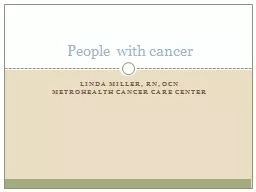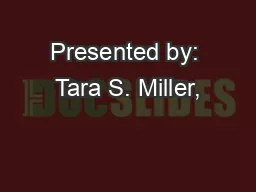PPT-Linda Miller, RN, OCN
Author : tawny-fly | Published Date : 2017-07-14
MetroHealth Cancer Care Center People with cancer Statistics American Cancer Society estimates for 2014 In US 1665540 new cases In US 585720 deaths In Ohio 67000
Presentation Embed Code
Download Presentation
Download Presentation The PPT/PDF document "Linda Miller, RN, OCN" is the property of its rightful owner. Permission is granted to download and print the materials on this website for personal, non-commercial use only, and to display it on your personal computer provided you do not modify the materials and that you retain all copyright notices contained in the materials. By downloading content from our website, you accept the terms of this agreement.
Linda Miller, RN, OCN: Transcript
Download Rules Of Document
"Linda Miller, RN, OCN"The content belongs to its owner. You may download and print it for personal use, without modification, and keep all copyright notices. By downloading, you agree to these terms.
Related Documents













![[EPUB] - OCN Exam Secrets Study Guide - Exam Review and OCN Practice Test for the ONCC](https://thumbs.docslides.com/902711/epub-ocn-exam-secrets-study-guide-exam-review-and-ocn-practice-test-for-the-oncc-oncology-certified-nurse-test-2nd-edition.jpg)
![[READ] - OCN Exam Practice Questions: OCN Practice Tests & Exam Review for the Oncc Oncology](https://thumbs.docslides.com/903138/read-ocn-exam-practice-questions-ocn-practice-tests-exam-review-for-the-oncc-oncology-certified-nurse-exam.jpg)